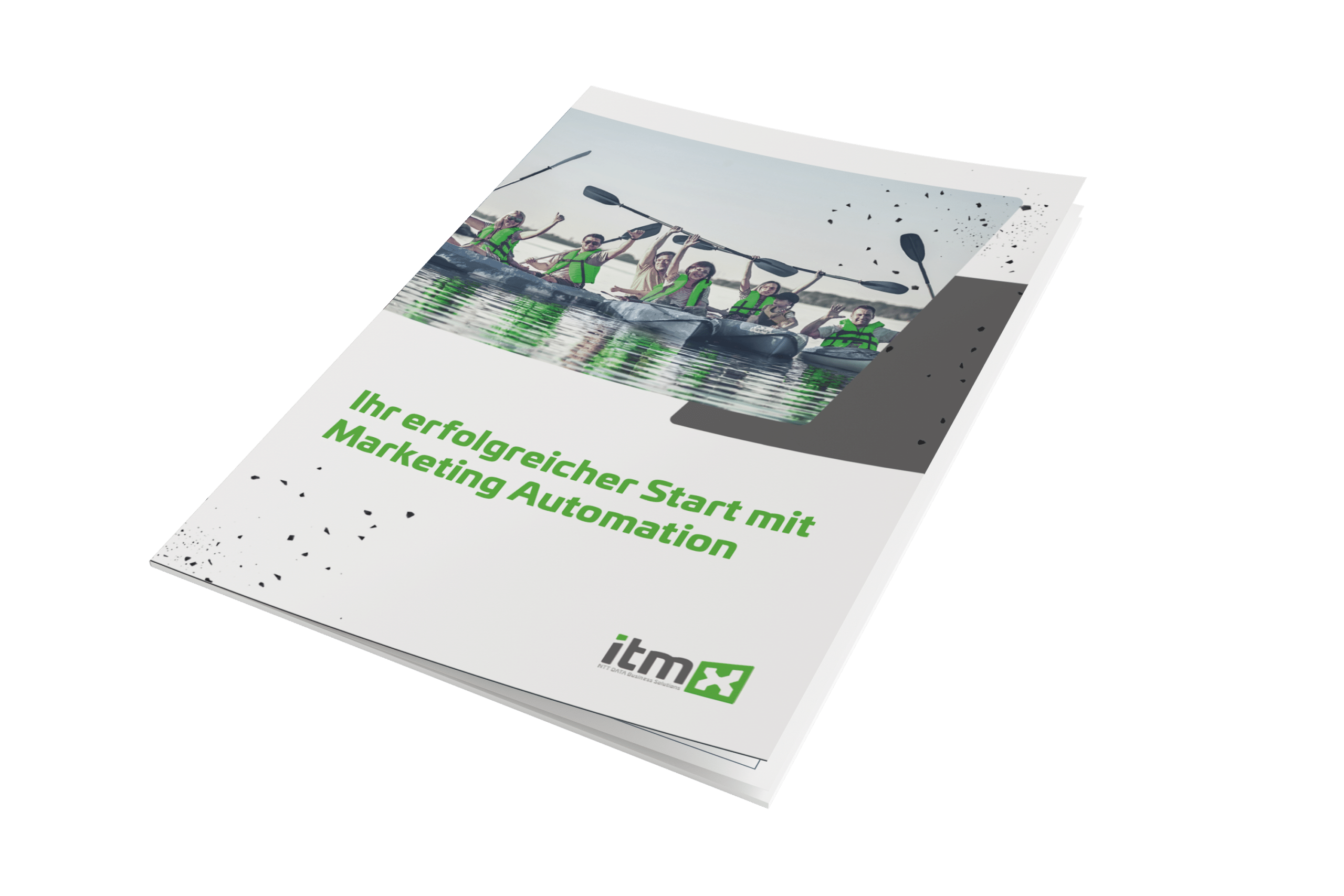Personalized and automated marketing with marketing automation
The term Marketing Automation is on everyone’s lips these days. But what does marketing automation actually mean? Does marketing really run fully automatically and will we therefore soon no longer need marketing staff?
A reassuring answer – no. Marketing employees don’t have to worry about being replaced by software. On the contrary: the software supports employees in processes that would be difficult or impossible to implement manually. However, the software cannot develop marketing strategies or create content completely on its own.

Marketing automation software supports recurring tasks and the legally compliant double opt-in process
A concrete example: nowadays almost every company has one or the other whitepaper, e-book or similar on its website, the content of which is so valuable that you have to “pay” for it with your contact data. A typical marketing automation process here is that the DOI process is triggered when the form is filled out and, if this is successful, the content is automatically delivered. In the past, in times when marketing did not know marketing automation systems, all these processes were done manually. A big disadvantage here was that it quickly became confusing with many downloads and that if a download was made outside office hours, the website visitor did not get the document delivered immediately.
The primary task in marketing today is to collect leads – in other words, lead generation. A lead is the contact data of a person who has made contact with a company, e.g. via the website, and has provided their e-mail address. If this lead has now been received, one often does not know much more about it except that there is an interest in the company’s products or services. The lead must therefore be nurtured – or in German – enriched with further information. And it is precisely these lead nurturing (link to blog post #35 when it is live) processes that are another building block that can be mapped via marketing automation. In order to carry out these processes in a targeted manner, it is necessary to think in advance about what should happen when someone downloads a whitepaper on the topic XY, for example. The concrete question here is: what other content could interest the person and how can the profile be enriched with it so that the sales department can do something with it.
Lead scoring is derived from the topic of lead nurturing. Every campaign aimed at gaining leads consists of several campaign stages, the individual elements of which can be weighted differently.
Here’s an example: A person became aware of a company’s podcast via Google, social media, or Spotify. Now the person visits their website because they want to see what the specific service is. She browses a bit and sees that an e-book is offered on the topic of “Introducing a Marketing Automation Solution” and downloads it. Now the company has some basic data on the person. This information is worth 50 points, for example, because this previously unknown contact could be converted into a lead and they now know that marketing automation is a topic for the person. Based on this, the contact is now offered further content on the topic. Since the person is now recorded as a lead in the marketing automation system, all further actions can be tracked and weighted with points. Once a pre-defined value has been reached, it is time for the person to be contacted personally by the sales department.
Marketing Automation thus offers numerous advantages such as the automation of processes, the personalization and individualization of content, and data protection. However, it is important to see marketing automation as a complement to existing marketing, not a replacement. The software supports the marketing team in implementing processes and delivering content, but it cannot replace human creativity.
Effective lead nurturing and lead scoring of the collected data
The primary task in marketing today is to collect leads – in other words, lead generation. A lead is the contact data of a person who has made contact with a company, e.g. via the website, and has provided their e-mail address. If this lead has now been received, one often does not know much more about it except that there is an interest in the company’s products or services. The lead must therefore be nurtured – or in German – enriched with further information. And it is precisely these lead nurturing (link to blog post #35 when it is live) processes that are another building block that can be mapped via marketing automation. In order to carry out these processes in a targeted manner, it is necessary to think in advance about what should happen when someone downloads a whitepaper on the topic XY, for example. The concrete question here is: what other content could interest the person and how can the profile be enriched with it so that the sales department can do something with it.
Lead scoring is derived from the topic of lead nurturing. Every campaign aimed at gaining leads consists of several campaign stages, the individual elements of which can be weighted differently.
Here’s an example: A person became aware of a company’s podcast via Google, social media or via Spotify. Now the person visits their website because they want to see what the specific service is. She browses a bit and sees that an e-book is offered on the topic of “Introducing a Marketing Automation Solution” and downloads it. Now the company has some basic data on the person. This information is worth 50 points, for example, because this previously unknown contact could be converted into a lead and they now know that marketing automation is a topic for the person. Based on this, the contact is now offered further content on the topic. Since the person is now recorded as a lead in the marketing automation system, all further actions can be tracked and weighted with points. Once a pre-defined value has been reached, it is time for the person to be contacted personally by the sales department.
Marketing automation therefore offers numerous advantages such as the automation of processes, the personalization and individualization of content, and data protection. However, it is important to see marketing automation as a complement to existing marketing and not as a replacement. The software supports the marketing team in implementing processes and delivering content, but it cannot replace human creativity.
About the author


